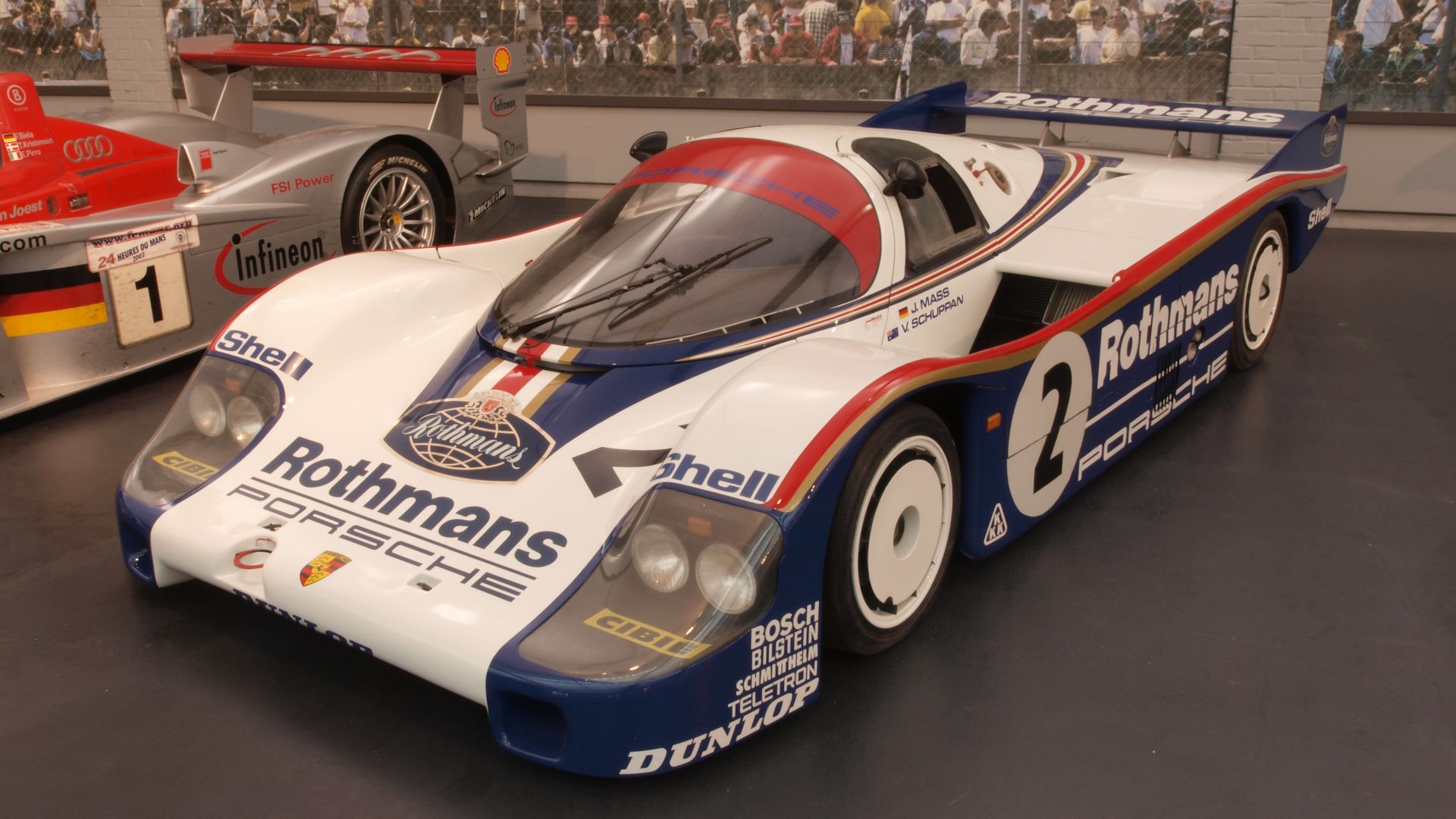You May Love German Cars, But Did You Know About These Ultra-Rare Porsches?
Porsche has been making high-quality, luxury performance cars since 1948, when Ferdinand Porsche created the Porsche brand. From their very first production car—the Porsche 356—to the classic 911, many of Porsche's cars are some of the best on the market and the most iconic in history. Let's explore some of the rarest Porsches ever built.
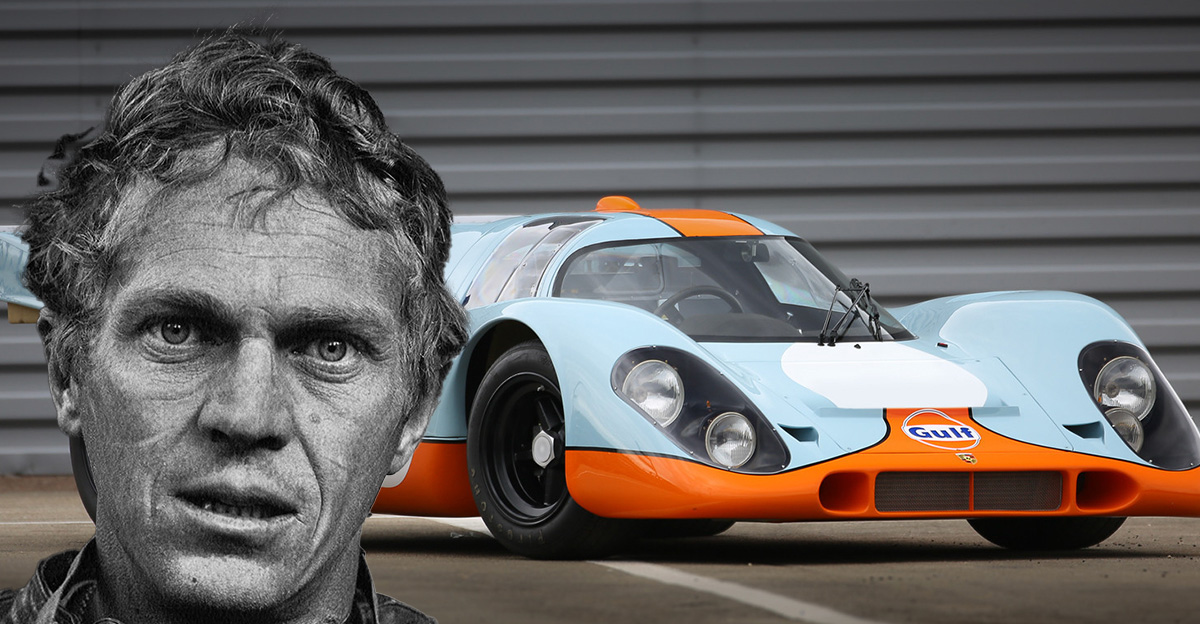
1970 Porsche 917K
The most expensive Porsche ever to sell at an auction and one of the rarest ever built. The 917K was devised by Porsche's racing division for the 1970 racing season. Despite achieving now-iconic racing status, Swiss racer Jo Siffert, who drove the 917K during that time, said that it was one of the most dangerous and unbalanced race cars ever. He only drove it for one race at the 1,000 Kilometers at Spa race in 1969, before electing to race in an older car for the rest of the season.
 Brian Snelson, Wikimedia Commons
Brian Snelson, Wikimedia Commons
1970 Porsche 917K (Cont'd)
You may recognize this particular Porsche from a movie featuring Steve McQueen: Le Mans (1971). He was shown driving this particular Porsche 917K in the movie—but interestingly, McQueen didn't even get to turn the wheel of the 917 as it was only used for background and tracking shots. Powered by a flat-12 engine, McQueen didn't even get to test the 5.0L engine that produced 600 hp and had an astonishing top speed of 225 mph.
 Brian Snelson, Wikimedia Commons
Brian Snelson, Wikimedia Commons
1982 Porsche 956 C
The Porsche 956 may be one of the most iconic German cars of all time, right up there with the 911, but this early 1980s "C" model is a rare one. Made exclusively of aluminum to allow the car to meet racing restrictions on weight, the 956 C was intended to be raced in Group C in the FIA World Sportscar Championship.
1982 Porsche 956 C (Cont'd)
In 1982, the 956 C would win the 24 Hours At Le Mans race, having led early on and kept up the lead for the entire race. After three years of racing victories, the 956 C would be retired after a collision in the 1985 1,000 km of Spa race, where it hit the team's newer Porsche 962. The 956 came off worse and was retired over safety concerns, being replaced by the 962.
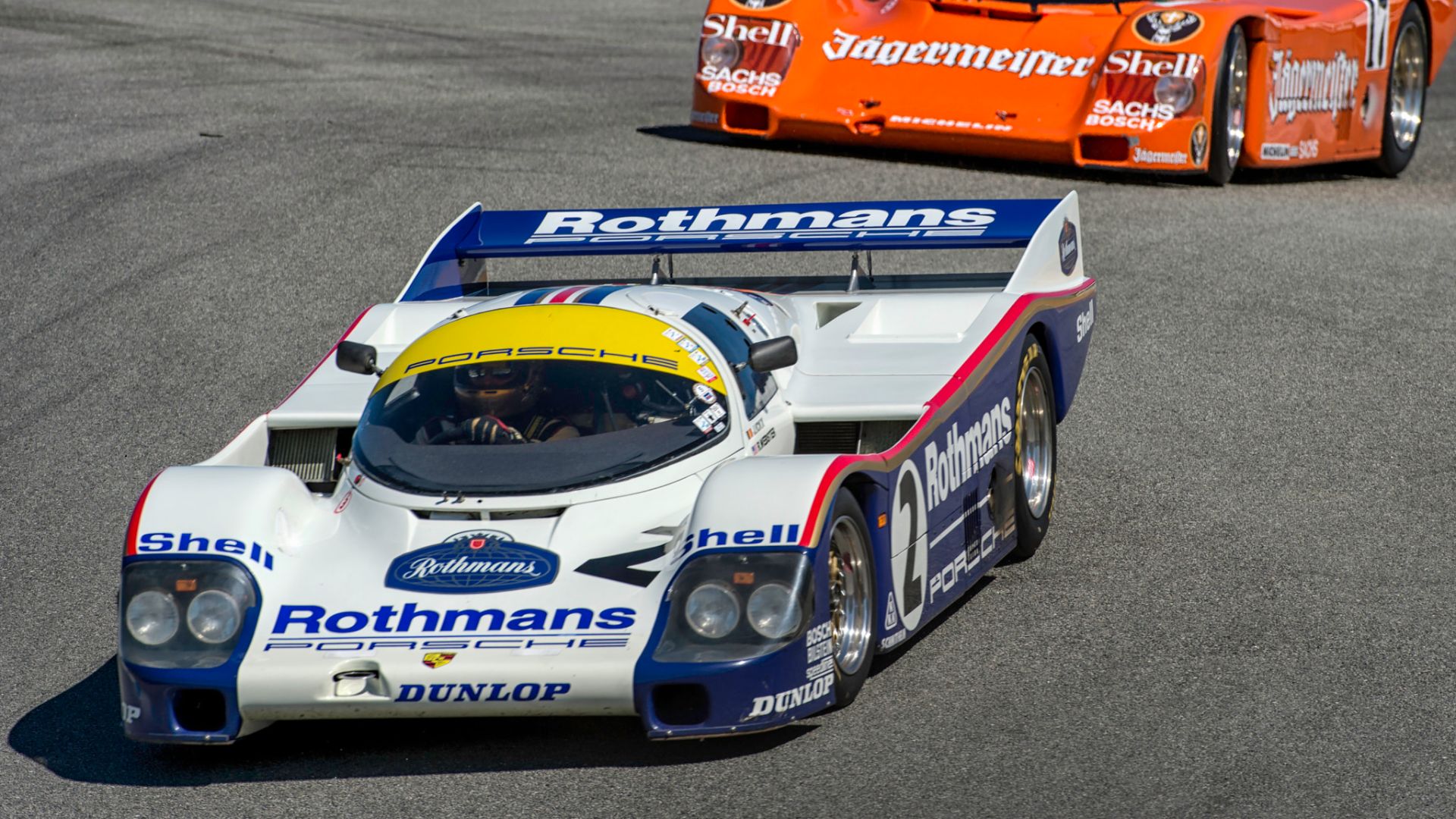 Mike Majewski, Wikimedia Commons
Mike Majewski, Wikimedia Commons
1953 Porsche 550 Spyder
Before they were making race-winning championship cars, they were designing opulent sports cars that were beautiful to look at, but also packed a punch. Just 13 units were made of the 550 Spyder, which won the 1954 Carrera Panamerica race, gifting Porsche the opportunity to use the "Carrera" nameplate moving forward. Powered by a 1.5L flat four-cylinder engine producing 110 hp, it won the Eiffel Race in Paris in 1953, the very first race it entered.
1953 Porsche 550 Spyder (Cont'd)
But it wasn't just racing prowess that set the 550 Spyder apart; it was a beautiful car when not decked out with racing decals. It was made of lightweight aluminum front to back with a very minimalist interior and extremely low profile. This gave the 550 the edge over competitors on the track. Today, it's one of the most valuable Porsches ever, as one sold at auction in 2018 for $5.1 million.
1985 Porsche 959 Paris-Dakar
Porsche has long been in the endurance racing game, ever since the 1970 917K, but the 1985 Porsche 959 Paris-Dakar rally car took that to a whole other level. One of just three cars produced by Porsche for Dakar racing, this one was driven by Rene Metge, and had to retire early from the Dakar Rally in 1985 with an oil line failure. The other two cars crashed.
 Rutger van der Maar, Wikimedia Commons
Rutger van der Maar, Wikimedia Commons
1985 Porsche 959 Paris-Dakar (Cont'd)
Recovering from that unfortunate failure at the '85 Paris-Dakar Rally, Porsche would produce just seven examples of the car, complete with a 2.8L twin-turbocharged flat-six engine that produced over 440 hp. Its top speed was an astonishing 198 mph, and it roared from 0 to 60 in 3.8 seconds. One of the rarest Porsches ever was a cornerstone of their campaign in the world's ultimate endurance race.
1972 Porsche 917/10
Another 917 from Porsche's racing lineup was the ultra-rare 917/10, geared towards racing in North America in the early 1970s, as Porsche began to turn away from European competition. The engine on this thing was incredible: a 5.4L twin-turbocharged flat-12 that produced a staggering 1,150 hp and could hit 100 mph in 3.5 seconds. The banana racing car won five of the nine races in the CAN-AM racing series of 1972.
 Brian Snelson, Wikimedia Commons
Brian Snelson, Wikimedia Commons
1972 Porsche 917/10 (Cont'd)
The Formula One-esque performance of the 917/10 saw this car (chassis #003) fetch an astonishing $5.8 million at Mecum Auctions in 2012. At just 172.6 inches long, it was the shortest 917 ever built, and it also had a pretty whacky rear spoiler that was integrated into the body to increase aerodynamics. It wasn't pretty, but was fast and achieved legendary status tout suite.
 Alexander Migl, Wikimedia Commons
Alexander Migl, Wikimedia Commons
1998 Porsche 911 GT1 Strassenversion
The Porsche 911 GT1 is a racing car, but its ultra-rare homologated cousin, the Strassenversion, borrows plenty of its design from the Type 996 911. With underbody vanes, aerodynamic splitters, and a massive rear spoiler, the Strassversion was one of the craziest supercars of the late 1990s.
 Detectandpreserve, Wikimedia Commons
Detectandpreserve, Wikimedia Commons
1998 Porsche 911 GT1 Strassenversion (Cont'd)
Powered by a 5.5L twin-turbocharged flat-six engine, the Strassenversion produced 544 hp and could hit 60 mph from a standstill in 3.6 seconds. Selling for $5.65 million in 2017, only 25 street-going examples of the 911 GT1 were produced, in keeping with Le Mans homologation rules.
 DRIVING AN ICON! My First Time in the PORSCHE 911 GT1 STRASSENVERSION, Shmee150
DRIVING AN ICON! My First Time in the PORSCHE 911 GT1 STRASSENVERSION, Shmee150
1960 Porsche 718 RS60 Werks
Nearly 40 years prior to the Strassenversion, this tiny race car from Porsche stole the show on the European circuit. It's no wonder, with legends like Stirling Moss, Graham Hill, and Dan Gurney behind the wheel of a 1.5- 1.7L producing 178 hp and hitting top speeds of up to 178 mph.
1960 Porsche 718 RS60 Werks (Cont'd)
This Porsche model is widely considered the ultimate iteration of Porsche's early 1960s racing, despite the fact that it was only raced for two seasons. It won Le Mans, Sebring, the Targa Florio, and the Nordschiefle during the 1,000 km of Nürburgring race.
 Louis Klemantaski, Wikimedia Commons
Louis Klemantaski, Wikimedia Commons
1955 Porsche 550 RS Spyder
Despite having a small 1.1-1.5L engine size, the 1955 Porsche 550 RS Spyder didn't disappoint racers or Porsche enthusiasts when it took to the track. It was also owned by one very famous celebrity: Jerry Seinfeld. The legendary comedian-turned-racing enthusiast loved this 1955 Porsche 550 and put it up for auction in 2016, where it sold for $5.3 million.
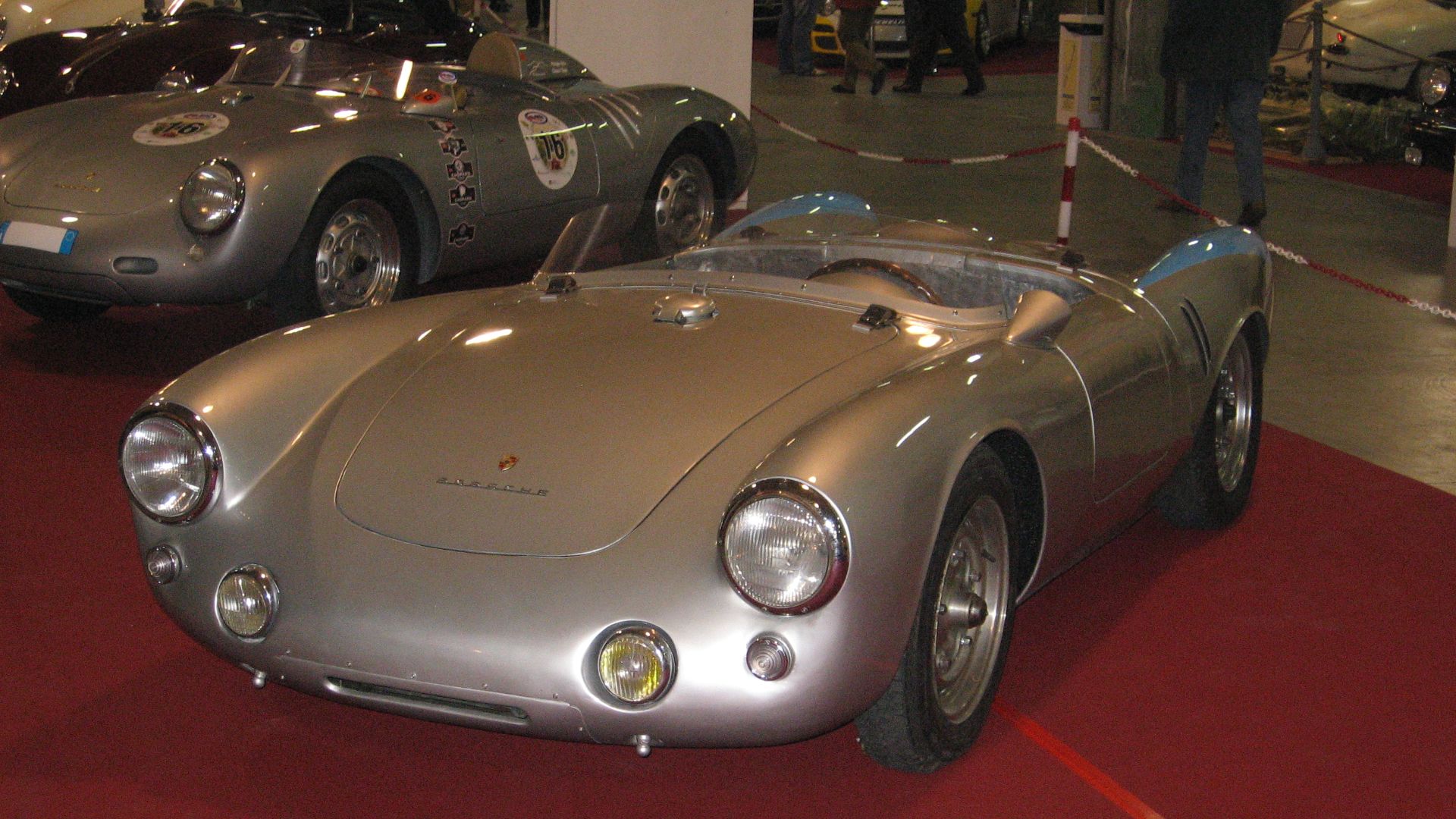 No machine-readable author provided. Luc106 assumed (based on copyright claims)., Wikimedia Commons
No machine-readable author provided. Luc106 assumed (based on copyright claims)., Wikimedia Commons
1955 Porsche 550 RS Spyder (Cont'd)
Only 90 of these Porsches were ever built, including one for James Dean. It was one of the first Porsche 550s ever built and was the car that James Dean was traveling in on the day of his fateful accident in 1955. Tom Pittman, a rising Hollywood actor in his own right, also passed away while driving a 550 RS Spyder in 1958.
1958 Porsche 550A Spyder
Another Spyder on our list is this exquisite 1958 Porsche 550A, powered by an all-aluminum naturally aspirated 1.5L four-cylinder engine. Producing 135 hp, the 550A Spyder saw action all over Europe in 1958, from placing fifth at Le Mans and sixth at Nurburgring—the 550A is another Porsche racing legend from the 1950s.
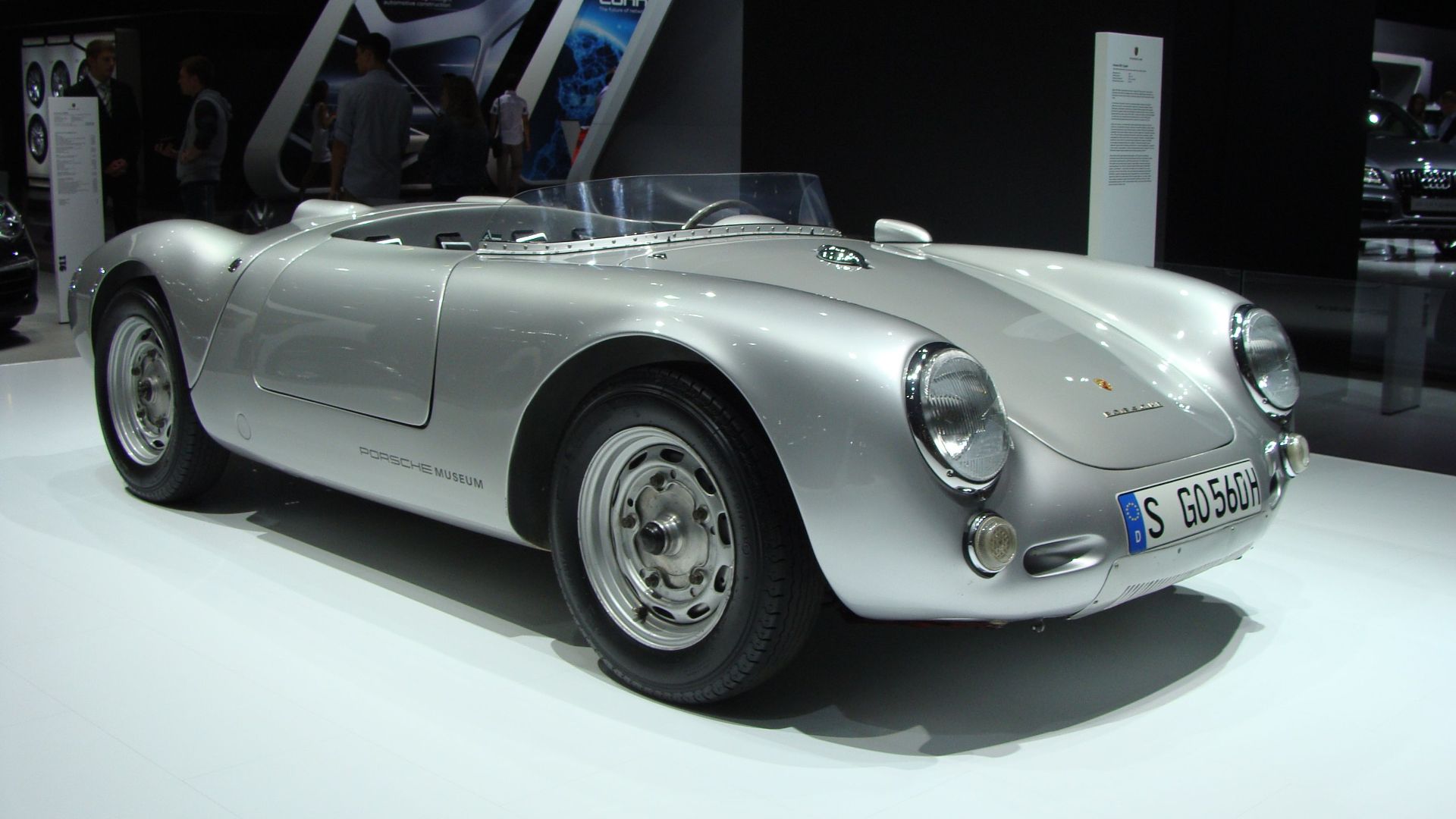 Kirill Borisenko, Wikimedia Commons
Kirill Borisenko, Wikimedia Commons
1958 Porsche 550A Spyder (Cont'd)
Only 40 of the 1958 Porsche 550As were ever made, each powered by a 1.5L flat-four cylinder engine that could reach a staggering top speed of 150 mph. Plenty fast enough for the racetrack, which, for the most part, it dominated in the late 1950s. One sold for $5.17 million in Scottsdale, Arizona in 2018.
 REVealed: 1958 Porsche 550A Spyder, GoodingandCompany
REVealed: 1958 Porsche 550A Spyder, GoodingandCompany
1979 Porsche 935A
Developed as a factory racing version of the 911 Turbo, the 935A was introduced in 1977 to a baying crowd of racing enthusiasts. Fitted with a 3.0L twin-turbocharged flat-six engine that produced 845 hp, with a top speed of 183 mph, it was later driven by Paul Newman in the 1979 World Sportscar Championship and finished a close second at the 1979 24 Hours At Le Mans race.
 The Porsche 935: A Racing Icon, GoodingandCompany
The Porsche 935: A Racing Icon, GoodingandCompany
1979 Porsche 935A (Cont'd)
Establishing its racing pedigree over the next couple of years, it was the car's performance in the early 1980s that cemented it as a legendary racing car. This included victory at the 1981 24 Hours of Daytona race and another victory in 1983 at the 12 Hours of Sebring. One of these rare beauties sold in 2016 for an astonishing $4.4 million.
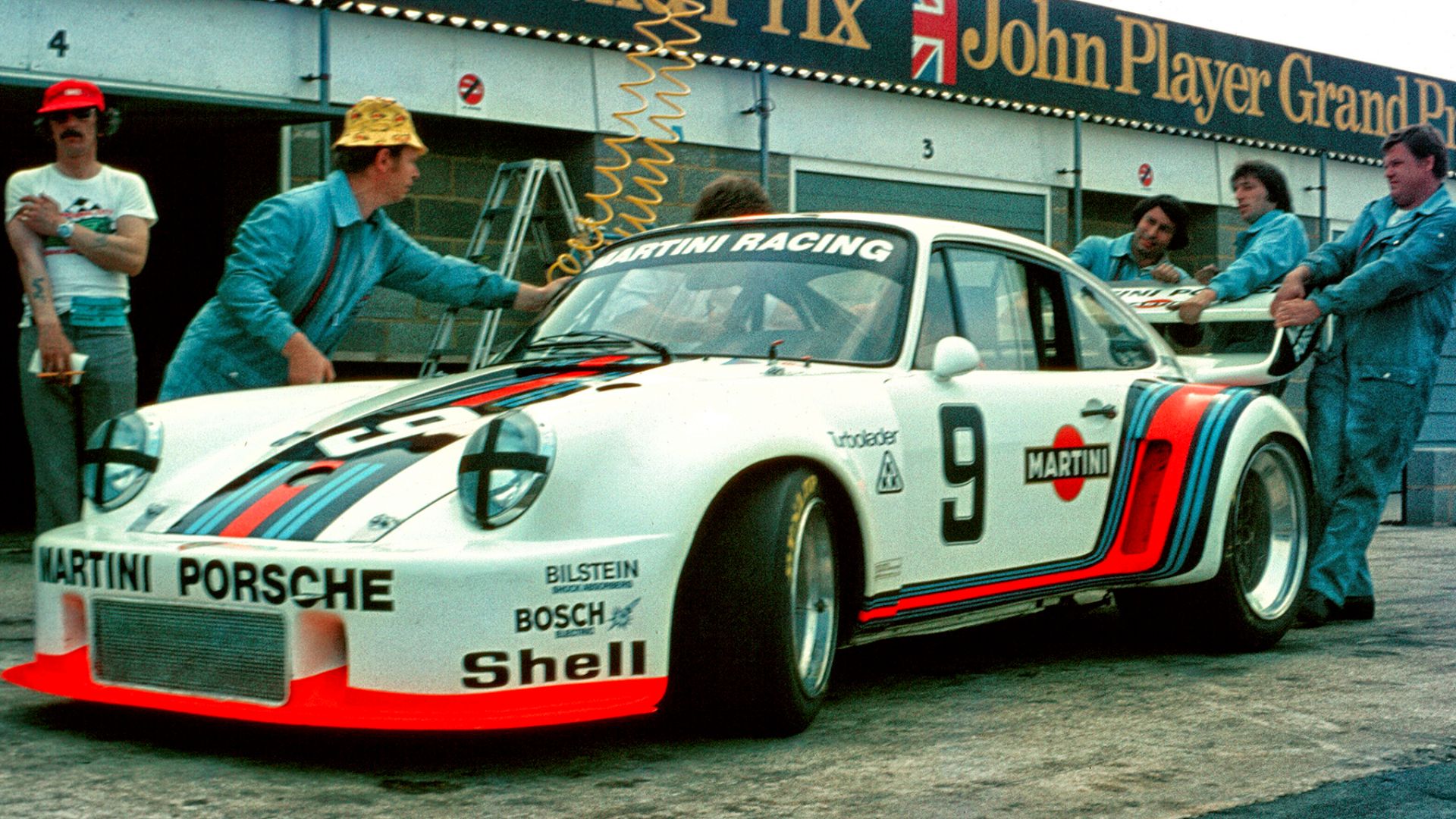 Gillfoto Juneau, Alaska, United States., Wikimedia Commons
Gillfoto Juneau, Alaska, United States., Wikimedia Commons
2007 Porsche RS Spyder
From the '70s to 2007, the Porsche RS Spyder was an ultra-rare race car that made its debut in 2005 in the American Le Mans race, winning in its class. It's so rare that it didn't even receive a full racing livery, but did win outright at the 2008 12 Hours of Le Mans race. Within two years of that win, despite good performance, the car was ultimately replaced in 2010.
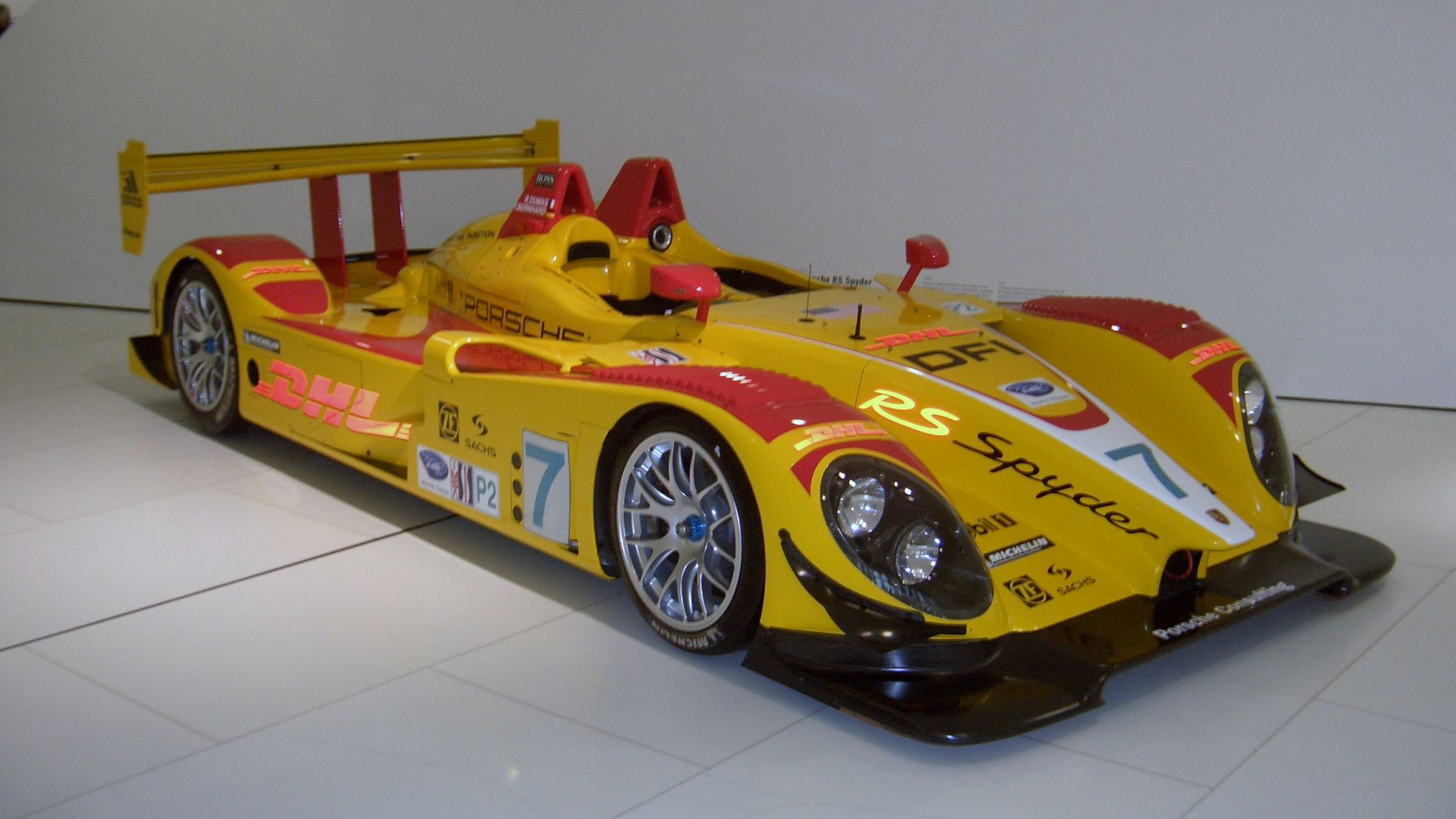 Detectandpreserve, Wikimedia Commons
Detectandpreserve, Wikimedia Commons
2007 Porsche RS Spyder (Cont'd)
Because the RS Spyder didn't see much by way of track time, its rarity meant it was a hot commodity when it went up for auction in 2018. What was even more special was that it had a bare body: just the silver carbon fiber that it was originally constructed with, no racing livery attached. It sold for $4.51 million.
 Clemson from San Francisco, USA, Wikimedia Commons
Clemson from San Francisco, USA, Wikimedia Commons
1973 Porsche 917/30
The 1973 917/30 was the perfect follow-up car for the legendary 1972 Porsche 917. It's the single most powerful race car ever built by Porsche. Powered by a 5.4L twin-turbocharged flat 12-cylinder engine that produced—wait for it—1,580 hp, it could hit 200 mph in 11.9 seconds.
1973 Porsche 917/30 (Cont'd)
Despite all that incredible power, the #004 chassis of the Porsche 917/30 was never entered into a single CAN-AM race, despite its intended entry into the 1974 season. Rule changes in Europe derailed those plans, so the car was sold to Australian importer Alan Hamilton for showcasing in his showroom.
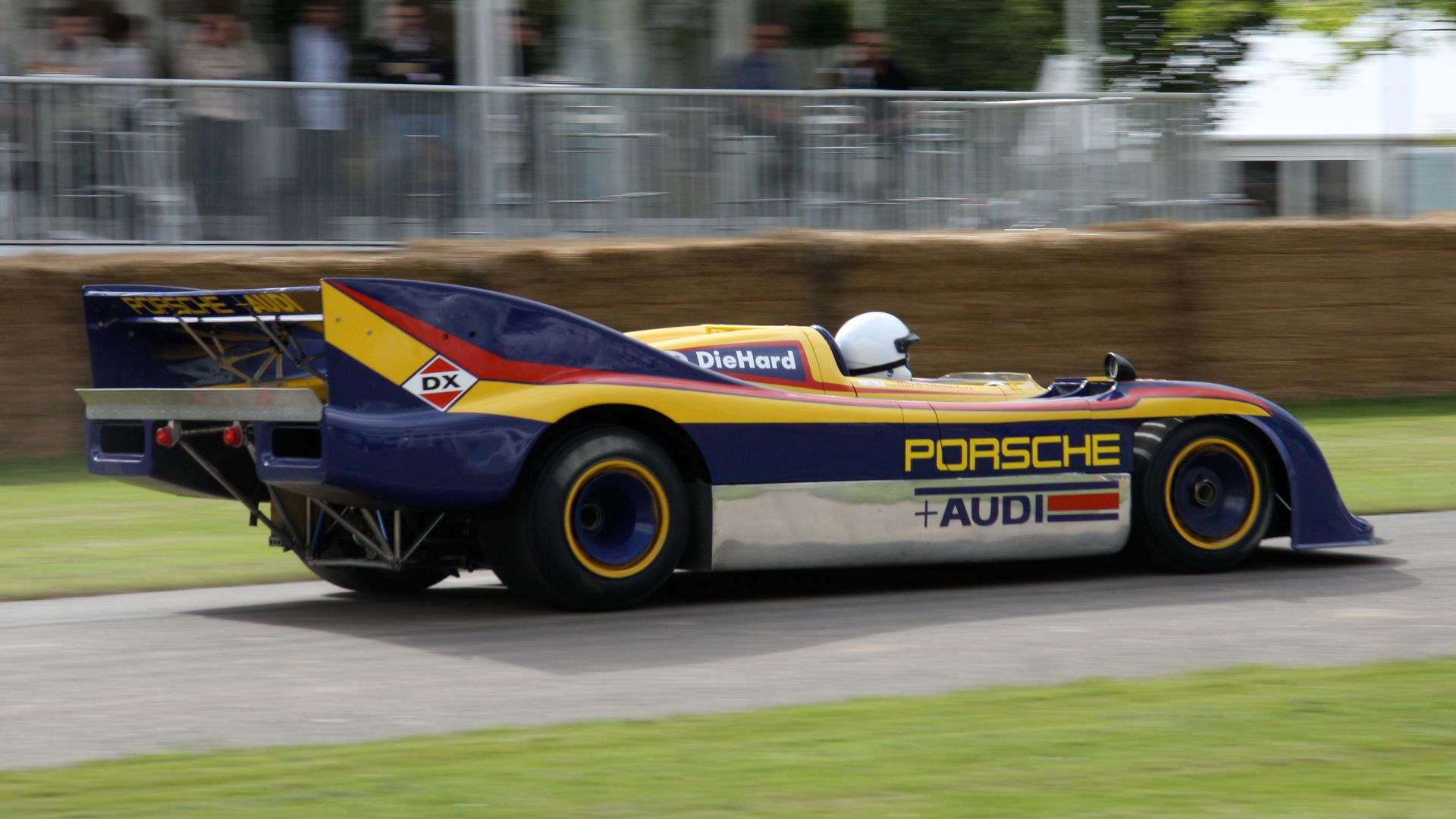 Brian Snelson from Hockley, Essex, England, Wikimedia Commons
Brian Snelson from Hockley, Essex, England, Wikimedia Commons
1970 Porsche 917K Interserie Spyder
Another incredible 917 by Porsche was the 1970 Interserie Spyder. Just three of these rare racing cars were built for use in the 1971 Interserie racing championships in Europe—they would go on to win all three championships held that year.
 Curt Smith from Bellevue, WA, USA, Wikimedia Commons
Curt Smith from Bellevue, WA, USA, Wikimedia Commons
1970 Porsche 917K Interserie Spyder (Cont'd)
Thanks to the rest of the 917 series from the previous year being crashed, destroyed, or retired, the 1970 917 Interserie Spyder required an extensive rebuild, which was just an excuse for Porsche to put a bigger engine in it. Which they did, of course, without needing a second invitation: a 4.9L flat-12 that pushed out 600 hp and catapulted the 917K to 60 mph in just 2.3 seconds. Its top speed? An eye-watering 242 mph.
 Brian Snelson from Hockley, Essex, England, Wikimedia Commons
Brian Snelson from Hockley, Essex, England, Wikimedia Commons
2022 Porsche Type 996 911 Sally Special GTS
The early 2020s were a good time for Porsche—so good that it produced the "Sally Special", a Type 996 911 GTS that was an homage to the car's inclusion in Disney Pixar's Cars movie. The car received a shade of blue paint that was mixed specially for the vehicle and used one time only. Special stitching on the inside made this car truly one-of-a-kind.
 2023 Porsche 911 Sally Special One-Off Cars from Pixar, AUTO TV
2023 Porsche 911 Sally Special One-Off Cars from Pixar, AUTO TV
2022 Porsche Type 996 911 Sally Special GTS (Cont'd)
This car was truly a one-off and would never be made again. It was sold by RM Sotheby's in 2022 at a Monterrey Classic presentation. Bonnie Hunt (the voice of Sally in Cars) and Bob Pauley, the production designer for Pixar who sketched the original "Sally" car, appeared. Neither Porsche nor Disney collected anything from the sale of the car, which totalled $3.6 million, with every cent being given to charities.
 2023 Porsche 911 Sally Special One-Off Cars from Pixar, AUTO TV
2023 Porsche 911 Sally Special One-Off Cars from Pixar, AUTO TV
1970 Porsche 908/03 Spyder
The only 908 test car that was sold to the public, and one of only three test cars of the 908/03 Spyder. This is the rarest and most special version of the 908 race car, as it was tested for Targa Florio by lapping the 44-mile circuit 14 times, to ensure that the team was getting the best setup. It came second overall in the 1970 1,000 km of Nürburgring, the only race it ever entered.
1970 Porsche 908/03 Spyder (Cont'd)
It was sold to private collectors in 1973 and underwent a few changes before being painstakingly restored back to its original racing livery and glory in 2018. When it went up for auction at Monterrey Classics in 2017, it fetched $3.5 million.
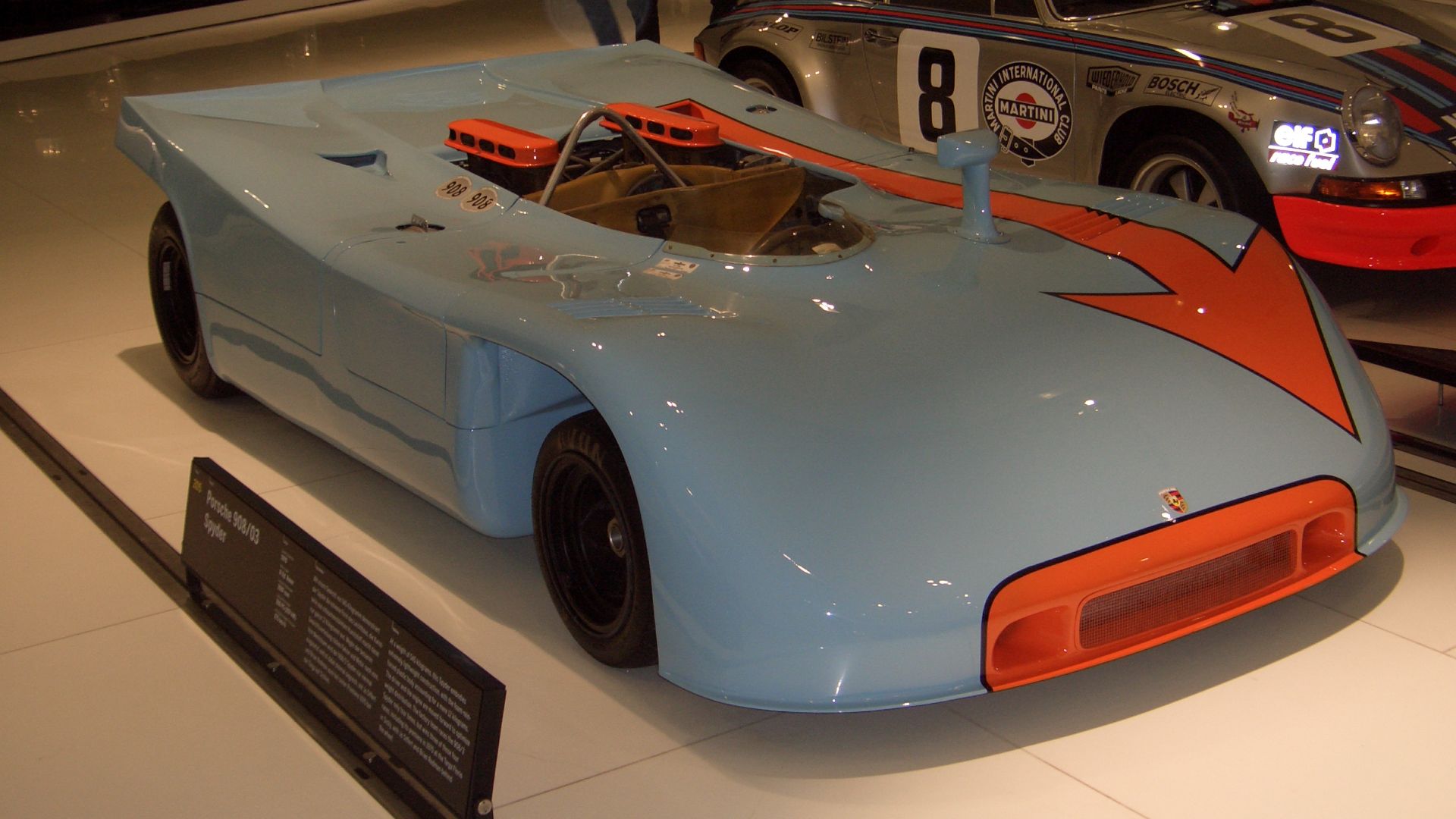 Detectandpreserve, Wikimedia Commons
Detectandpreserve, Wikimedia Commons
2018 Type 993 Porsche 911 Turbo "Project Gold"
Any gold car is going to be pretty special. But an all-gold 911 Turbo, specially designed and built for Porsche's 70th anniversary? It doesn't get much more special. It was the first (and last) air-cooled Porsche 911 built since 1998. Powered by an all-new 3.6L twin-turbocharged flat-six engine, the "Project Gold" delivered 450 hp using the original parts to the 993 Turbo.
 NEW Porsche 993 - Project Gold | EP076, 911Percent
NEW Porsche 993 - Project Gold | EP076, 911Percent
2018 Type 993 Porsche 911 Turbo "Project Gold" (Cont'd)
When the car went up for auction in Germany, with all proceeds going to the Ferry Porsche Foundation charities in the country, a bidding war between nine people lasted for half an hour before the one-of-a-kind "Project Gold" sold for $3.41 million.
 NEW Porsche 993 - Project Gold | EP076, 911Percent
NEW Porsche 993 - Project Gold | EP076, 911Percent
1968 Porsche 911 R
The 1968 Porsche 911 R was the creation of Colin Chapman, founder of Lotus Motors in the UK. He spoke with Porsche designer Ferdinand Piech in 1968 with the aim of having Porsche produce 20 cars that followed Chapman's mantra: "simplify, then add lightness". The overall goal was to create a car that could compete in the FIA's GT 2.0 category that year. The result was the 1968 Porsche 911 R.
 1968 Porsche 911 R - Walk around & Drive, RSC Automobile
1968 Porsche 911 R - Walk around & Drive, RSC Automobile
1968 Porsche 911 R (Cont'd)
Designed to abide by FIA homologation rules, the 1968 911 R had an engine cased in magnesium, along with a steel unibody construction and carbon fiber body panels. Once completed, the car was raced extensively throughout the 1970s and so needed to be rebuilt before it could be sold in 2021. Once completed, the car sold for $3.36 million.
1997 Porsche 911 GT1 Evo
In 2016, Monte Carlo auctions offered a classic 1997 Porsche 911 GT1 Evo, the only one that was street-legal. The other two had an impressive racing career in Europe and North America, claiming three Canadian racing championships and a podium finish at the 24 Hours of Daytona race in 2001. Powered by a 3.2L flat-six engine, the car was restored to its racing fortitude, producing 592 hp and a top speed of 191 mph.
 Edvvc from London, UK, Wikimedia Commons
Edvvc from London, UK, Wikimedia Commons
1997 Porsche 911 GT1 Evo (Cont'd)
When we say that it was rare, we mean that less than 10 of these 911 GT1 Evos exist today, with a gorgeous silver being the only available color. It clearly adopted styling from its elder brethren, inheriting (perhaps regretfully) the 996's "fried-egg" style headlights. Shame, for such a beautiful car.
 Thesupermat, CC BY-SA 4.0, Wikimedia Commons
Thesupermat, CC BY-SA 4.0, Wikimedia Commons
1988 Porsche 959SC By Canepa
Back in 1988, Porsche partnered with Bruce Canepa, a retired American race car driver of NASCAR fame, to design a specialized Porsche 959 in with a bright green coloring. Similar to the gold Porsche we mentioned above, this 1988 959 SC was reborn in 1987 with twin-turbochargers, adjustable suspension, and all-wheel drive—but that's before Bruce Canepa got his hands on it.
 Canepa and his 800-horsepower Porsche 959 SC, Porsche Club of America
Canepa and his 800-horsepower Porsche 959 SC, Porsche Club of America
1988 Porsche 959SC By Canepa (Cont'd)
His "restoration modification" in 2018 gave it a bright green makeover, a handcrafted low-rise rear spoiler, and additional horsepower to the engine, which now provided 800 hp. Newly tuned with twin turbochargers, 18-inch magnesium wheels, software controlled aerodynamics, and more, this one-of-a-kind ride is what happens when you pair Porsche originality with racing genius.
 Canepa and his 800-horsepower Porsche 959 SC, Porsche Club of America
Canepa and his 800-horsepower Porsche 959 SC, Porsche Club of America
1961 Porsche 718 RS61 Spyder
Only 14 of these 1961 Porsche 718 RS61 Spyders were ever made. Each was powered by a 1.6L flat-four cylinder engine that produced 178 hp thanks to twin carburetors. Robert Donner bought the racer from Porsche for use in American racing, but sold it in 1963 to Don Wester, who replaced the 1.6L with a 1.7L.
 #Porsche 718 W-RS Spyder - No Turbo but 8 Cylinders, Wheel Nuts
#Porsche 718 W-RS Spyder - No Turbo but 8 Cylinders, Wheel Nuts
1961 Porsche 718 RS61 Spyder (Cont'd)
Throughout the 1970s, the 718 RS61 Spyder changed hands many times, but was eventually restored to its original glory when one owner stripped out everything that wasn't in the original car. One of the 14 rare Porsche racers sold for $2.75 million in Arizona in 2014.
 #Porsche 718 W-RS Spyder - No Turbo but 8 Cylinders, Wheel Nuts
#Porsche 718 W-RS Spyder - No Turbo but 8 Cylinders, Wheel Nuts
You May Also Like:
The Best Of The Worst Muscle Cars In History


